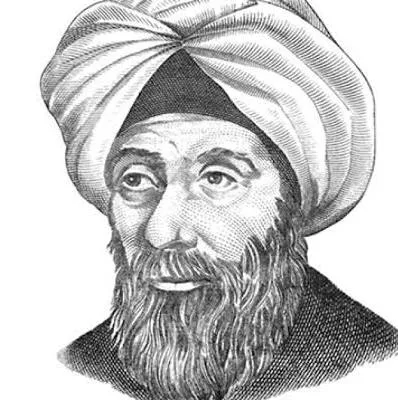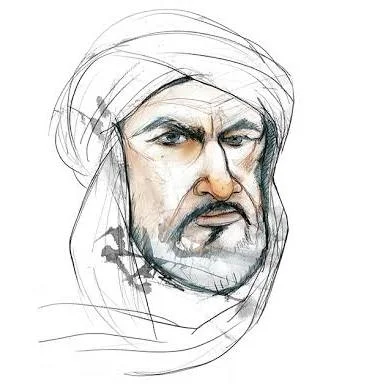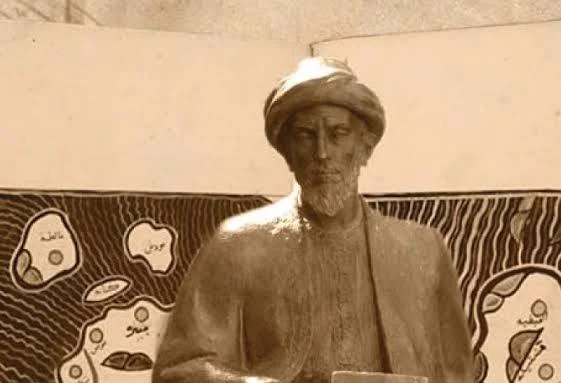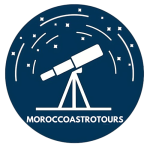Famous Astronomers Connected to Morocco and Their Contributions
Introduction
Morocco has a rich history of astronomical observation and scholarship dating back centuries. From medieval scholars who contributed to Islamic astronomy to modern-day scientists working at world-class observatories, Moroccan astronomers have played a vital role in expanding humanity’s understanding of the cosmos. Their work not only advanced science but also inspired cultural and educational developments throughout the region.
Ibn al-Haytham (Alhazen): The Father of Optics and Empirical Science (965–1040 CE)
Biography and Context
Ibn al-Haytham was born in Basra, Iraq, but his intellectual influence spanned the entire Islamic world, including Morocco. His life coincided with the Islamic Golden Age, a period marked by flourishing scholarship in science, mathematics, philosophy, and the arts.
Ibn al-Haytham’s early career focused on engineering and optics, but he soon shifted toward a scientific methodology that would radically transform how knowledge was pursued. He rejected the reliance on ancient authorities without evidence and instead emphasized observation, experimentation, and mathematical proof a scientific approach centuries ahead of its time.

Contributions to optics and astronomy
- Book of Optics (Kitab al-Manazir): This monumental seven-volume work explored the nature of light, reflection, refraction, and vision. Ibn al-Haytham refuted the then-dominant emission theory of vision (which claimed the eye emits rays) and proposed that vision occurs when light reflects off objects and enters the eye. This discovery was critical for improving the accuracy of astronomical instruments.
- Impact on Astronomy: Astronomers rely heavily on optics for observing distant celestial bodies. Ibn al-Haytham’s research informed the design and refinement of lenses, mirrors, and early telescopic devices, increasing the clarity and precision of star charts and planetary observations. His work enabled medieval astronomers to better understand atmospheric distortions and the behavior of light when passing through the Earth’s atmosphere.
- Legacy in Morocco: The University of Qarawiyyin in Fez, founded in 859 CE and considered one of the world’s oldest continuously operating universities, preserved and taught Ibn al-Haytham’s scientific principles. Moroccan scholars adopted his empirical method, influencing fields from astronomy to medicine, and bridging classical knowledge with Renaissance science.
philosophical and methodological legacy
Ibn al-Haytham’s insistence on verification, skepticism toward assumptions, and reliance on repeatable experiments laid the foundation for what would become the modern scientific method. His legacy transcended astronomy and optics, deeply influencing later thinkers both in the Islamic world and Europe during the Scientific Revolution.A Natural Mental Reset
Modern life overstimulates our nervous systems. Constant light, noise, and mental chatter can keep us in a state of alertness long after the workday ends. Stargazing acts as a gentle reset. Looking into the vast, dark sky, free from artificial screens, encourages the release of melatonin, helps lower blood pressure, and invites your parasympathetic nervous system (the “rest and digest” mode) to take over.
Al-Zarqali (Arzachel): Innovator of Instruments and Astrolabes (1029–1087 CE)
life in Al-andalus and cultural milieu
Al-Zarqali was born in Toledo, the intellectual heart of Muslim Spain (Al-Andalus), where Jewish, Christian, and Muslim scholars collaborated and translated classical texts. This environment was fertile for scientific innovation.

Scientific Achievements :
- Astrolabe Enhancements: Al-Zarqali refined the astrolabe, a multi-functional instrument used to measure celestial altitudes, determine prayer times, and navigate. His improvements increased precision and usability, such as the introduction of universal astrolabes that could be used anywhere on Earth without recalibration.
- Solar Observations: He designed a solar azimuth instrument for tracking the sun’s position, crucial for religious and agricultural purposes, including calculating exact prayer times and the start of Ramadan.
- Toledan Tables: These were a set of astronomical tables predicting the positions of the sun, moon, and planets with unprecedented accuracy. Compiled based on systematic observations and calculations, the tables were later translated into Latin and influenced European astronomers like Copernicus and Kepler.
Influence on Morocco and Beyond:
Moroccan scholars integrated Al-Zarqali’s instruments and data into their astronomical practice, which helped refine their calendars and improve navigation techniques, essential for trade routes across the Mediterranean and Atlantic. His works exemplify the dynamic knowledge exchange between Al-Andalus and the Maghreb.
Mohammad al-idrisi: the astronomer-geographer(1100-1165 ce)
life and role as polymath
Al-Idrisi’s career flourished at the court of King Roger II of Sicily, a rare example of Muslim-European cultural synthesis in medieval Europe. He was not only an astronomer but also a cartographer, geographer, and ethnographer.

The Tabula Rogeriana and Its Astronomical Foundations
- Creation of the Map: Completed in 1154, Tabula Rogeriana was one of the most accurate world maps until the Age of Discovery. It uniquely combined geographic knowledge with precise astronomical observations to orient the map and determine latitude and longitude.
- Astronomical Data Use: Al-Idrisi used measurements of the sun and stars to calculate distances and positions of landmasses, significantly improving navigation.
Moroccan Reception and Impact
Although al-Idrisi was Sicilian-based, Moroccan scholars studied his works, particularly as Morocco expanded its maritime trade networks. His integration of astronomy with geography helped shape Moroccan approaches to navigation across the Mediterranean and Sahara.
Modern moroccan astronomers and research institutions
Mr. M. Hammed Segaoui: Geologist, Astronomer & Desert Astro Entrepreneur
Mr. M. Hammed Segaoui, also known as “Moha,” is a Moroccan geologist and self-taught astronomer born in the Sahara in 1965. Coming from a nomadic background, he pursued education later in life and earned a geology degree in 1991. He now runs the ANDROMEDA Desert Observatory and Desert Luxury Astro Camp near Merzouga, where he offers stargazing experiences that blend scientific insight with Berber cultural traditions. Renowned for his storytelling and passion for the night sky, Hammed has become a key figure in Moroccan astro-tourism.
Dr. Mohammed Amine Amghar: Bridging Tradition and Modern Science
- Exoplanet Research: Amghar’s work uses data from telescopes and satellites to detect planets beyond our solar system, contributing to one of the most exciting frontiers in astronomy.
- Astrophotography and Education: He actively promotes astronomy among youth, organizing workshops that blend scientific rigor with artistic expression, helping cultivate a new generation of Moroccan skywatchers.
Oukaïmeden Observatory: Morocco’s Gateway to the Stars
- Location and Advantage: Situated at over 2,700 meters in the High Atlas Mountains, the observatory benefits from dark skies, minimal light pollution, and clear air
- Research and Discoveries: Home to the Morocco Oukaïmeden Sky Survey (MOSS), the observatory has discovered hundreds of new asteroids and comets. Moroccan astronomers there contribute to monitoring near-Earth objects (NEOs), vital for planetary defense.
- International Collaboration: The observatory partners with NASA, ESA, and other global institutions, positioning Morocco as a key player in space observation and planetary science.
Educational Initiatives and Outreach
- Universities like Cadi Ayyad University and Al Akhawayn University offer specialized astronomy and physics programs.
- The Oukaimeden International School of Astrophysics (OISA) trains African and European students, promoting cutting-edge research and capacity building.
- Festivals such as the Oukaïmeden Astronomy Festival and Ifrane Astronomy Festival celebrate Morocco’s cosmic heritage and promote public engagement.
Additional influential figures and the transmission of knowledge
Al-Battani (858–929 CE)
- Often called the greatest astronomer of the early Islamic era, Al-Battani refined solar and lunar tables and improved measurements of the solar year.
- His methods were adopted by Moroccan scholars and influenced the development of more accurate Islamic calendars.
Ibn Rushd (Averroes) (1126–1198 CE)
- A philosopher and scientist, Ibn Rushd emphasized empirical observation and rational inquiry.
- His commentaries on Aristotle influenced Moroccan intellectual thought and encouraged scientific approaches in astronomy and natural philosophy.
Knowledge Flow Between Regions
- Morocco served as a key transmission point, where Arabic, Berber, and Latin scholars exchanged and expanded astronomical knowledge.
- Translation movements and scholarly correspondence ensured that discoveries from the Middle East, Andalusia, and North Africa spread throughout Europe.
legacy and continuing impact of moroccan astronomy
Scientific Development
- Modern Morocco invests in observatories, research institutions, and international collaborations, aiming to be a leader in African astronomy.
- Moroccan researchers contribute to global projects monitoring asteroids, space debris, and exoplanets.
Cultural Significance
- Astronomy deeply influences Moroccan culture, appearing in poetry, architecture (e.g., intricate geometric patterns inspired by celestial shapes), and oral traditions.
- Festivals, public lectures, and school programs promote astronomy as a source of national pride and scientific advancement.
Public Engagement
- Morocco’s astronomy clubs and outreach programs make the science accessible, encouraging citizens from all backgrounds to engage with the cosmos.
- National and regional astronomy festivals attract tourists, scientists, and enthusiasts, strengthening Morocco’s position in global astronomical networks.
Conclusion
Morocco’s astronomical heritage is a testament to centuries of curiosity, discovery, and cultural richness. From medieval pioneers like Ibn al-Haytham, Al-Zarqali, and al-Idrisi to modern scientists pushing the boundaries of space science at the Oukaïmeden Observatory, Moroccan contributions have significantly shaped our understanding of the universe.
Their innovations in scientific methodology, instrumentation, observation, and education laid foundations for both Islamic and European astronomy, while inspiring new generations through cultural integration and public engagement. As Morocco invests in education, research, and international collaboration, its legacy shines brighter than ever, lighting the path toward future cosmic exploration.
